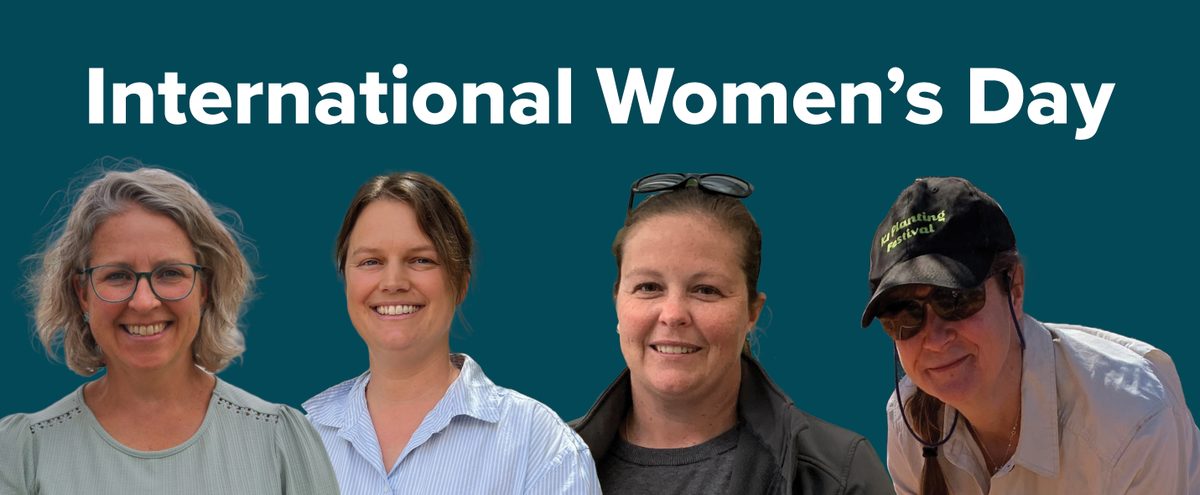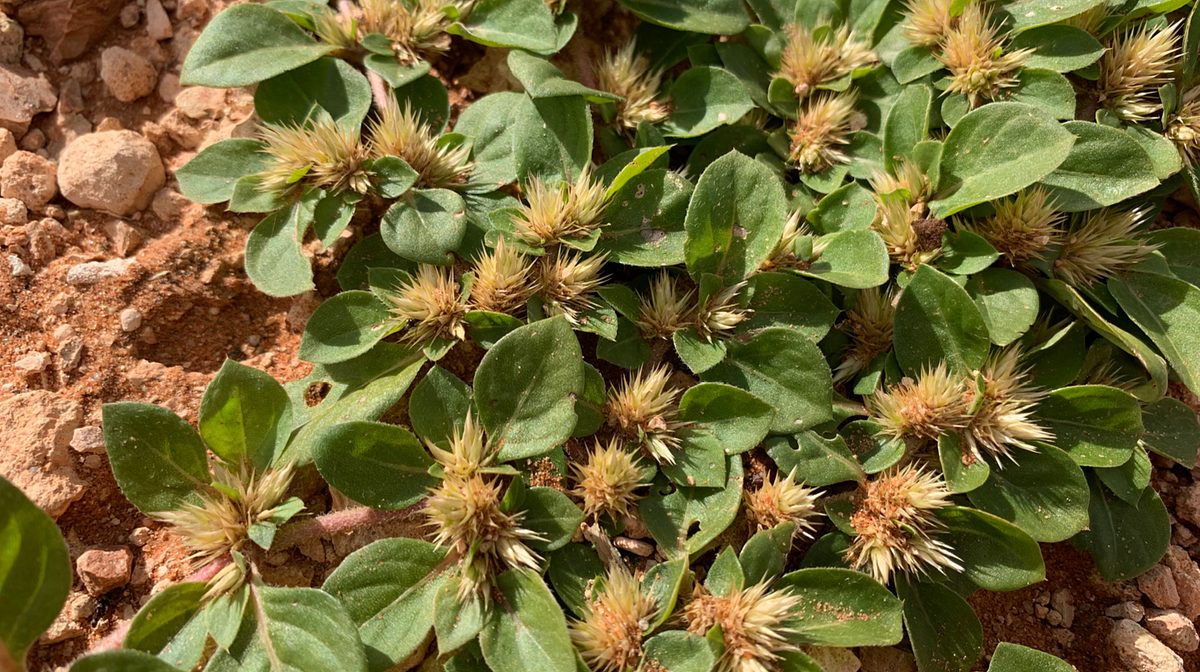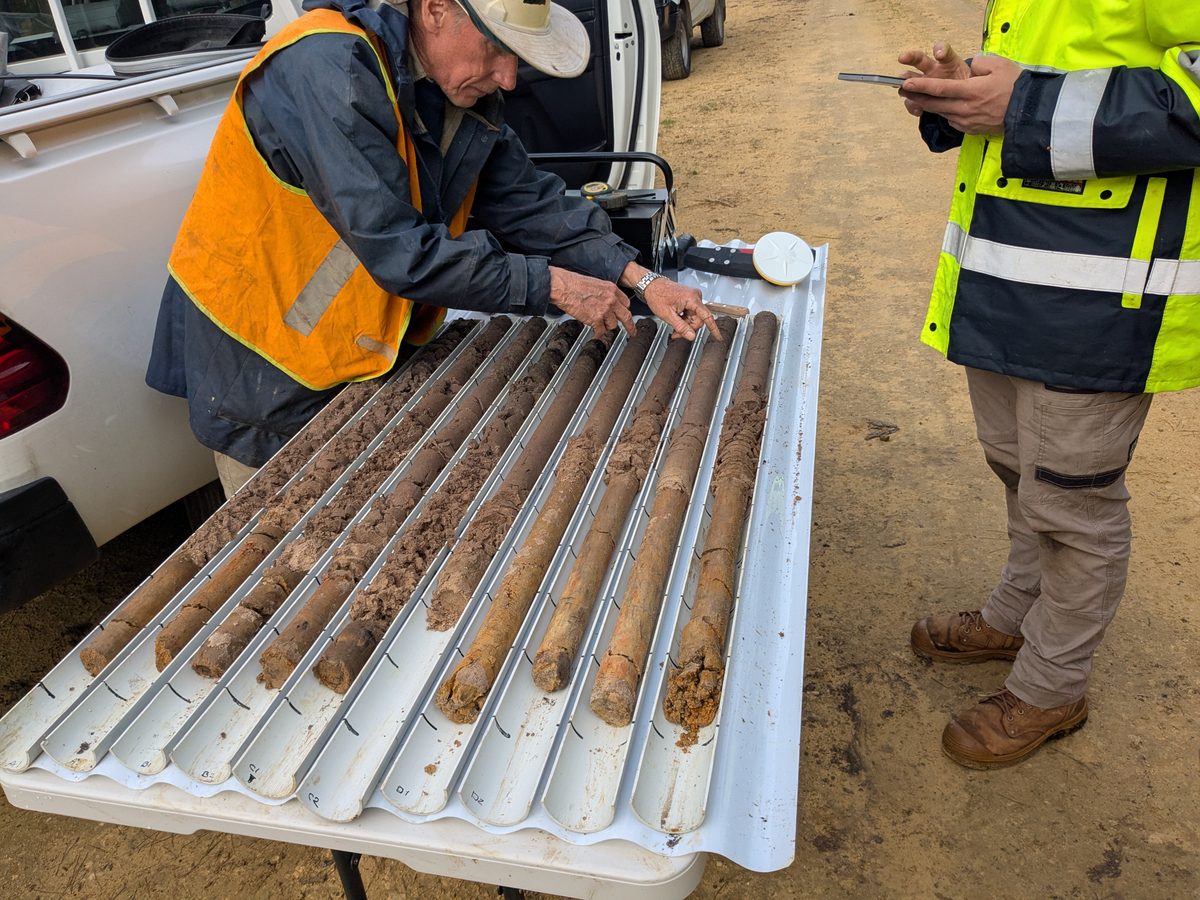Women in Leadership: Shaping the Future of Our Landscapes

This International Women’s Day, we’re shining a spotlight on some of the incredible women leading the way in landscape management across the Murraylands and Riverland region.
Leadership in natural resource management is evolving, with more women stepping into key roles, bringing fresh perspectives, and leading with expertise and passion. From tackling pest plant and animal control to leading big-picture strategies, their voices are shaping the way we care for our landscapes, ensuring a more balanced and inclusive approach to conservation. Our colleagues featured here are an inspiration for the next generation of women to aim high and pursue leadership in the environmental space!
Now, let’s meet some of the women leading the change in our region.

Renata Rix – Manager Sustainable Landscapes
You oversee a wide range of programs, from wetlands conservation to land and water management. How do you approach leading such a diverse team?
I love learning about all things environment and sustainability so working across a wide range of programs provides endless opportunities to gain knowledge. I also make it a priority to stay curious about my staff, who they are, and how they’re doing. I make time to have opportunistic conversations with team members so I can stay connected to what staff are working on, what brings them joy, and what challenges they face. If I know what things are challenging, I can work with our leadership team to try to reduce the challenges and make sure we support and develop our staff as much as possible.
How do you see female leadership shaping the future of sustainable landscapes?
I believe female leadership in managing sustainable landscapes brings a strong focus on care - for people in our organisations and the communities we work with. More women are taking on leadership roles in this area of business, and their ability to build meaningful connections, and foster partnerships is proving invaluable in achieving collective outcomes. Our ability to empathise, collaborate and nurture can really come to the fore to lead our community toward a more sustainable future.

Hannah Spronk – Team Leader Riverland District
Your team plays an important role in pest plant and animal control - what’s the most rewarding part of leading this work?
The most rewarding part is working with a team of passionate people dedicated to helping their local community. Although I’ve primarily worked in field based environmental roles, I’ve always enjoyed the people aspect of my job. Supporting my team to build connections with the community and find solutions to the challenges that landholders face is the most enjoyable part.
How is having more women in leading roles changing the way we manage our landscapes?
I think there has been a significant shift towards having a focus on people and connection. Science will always provide the data to guide our projects and management decisions but ensuring that all voices of the community are heard is vitally important to ensure we understand that whole picture.
Communities are now more engaged and informed, and provided with opportunities to collaborate with us in shaping landscape management decisions. When we foster genuine involvement from the local community, decisions around funding, management, and projects are more relevant and have a stronger impact.

Casey Henderson – Team Leader Murraylands District
What’s something people may not realise about leading a district team?
Leading a district team means being a problem solver, a coordinator, a facilitator and an enabler. No 2 days are ever the same! A lot of time is spent in the office - coordinating, planning, budgeting, and reporting - while my team is out in the field or based in different office locations. That might seem isolating or disconnected, especially for those who thrive on working closely with people. But leadership isn’t just about managing – it’s about building strong relationships. If you do that well, that one hour at the end of the day, when everyone’s back in the office, becomes the best part of the job. For me, it’s the highlight - sitting together, reflecting on the day’s challenges, sharing what worked (and what didn’t) and figuring out how to fix things. Even if you’re not the one physically on the ground, you’re contributing to real outcomes.
What advice would you give to women considering a leadership role in land management?
It’s important to be true to yourself, have confidence in your abilities, and trust that your contributions matter. When you do that, others will see your value too. Historically, leadership in land management has been a male-dominated space, and there were outdated perceptions about women’s roles in the field. But that is changing. Women are increasingly being recognised and valued for their expertise, leadership, and the fresh perspectives they bring.

Wendy Stubbs – Team Leader Landscape Ecology
What inspired you to pursue a career in landscape ecology, and how did you grow into a leadership role?
I’ve always had a love of animals, and growing up in the time of “all creatures great and small” I thought I should become a vet. But I also had a great love for the Australian bush. Eventually, I realised that I didn’t want to be a vet, I wanted a career focused on protecting plants and animals that belong in Australia. It wasn’t until first year university that I was introduced to the concept of ecology. From the first lecture, I knew that was what I wanted to do – I wanted my work to have real world outcomes.
I never thought I’d be a leader, but I grew (or maybe fell) into the role. It started with supervising a few ecologists, then stepping up into my boss’ role when he left the organisation. I discovered that I really enjoyed bringing out the best in people - helping them discover their strengths so we could achieve more for the environment.
What’s the most rewarding part of leading your team?
I love seeing the amazing outcomes my team achieves for conservation and how passionate they are about their work. Everyone brings their own flavour, favourites and style to this work, and that’s what drives us collectively to do better and achieve more.


